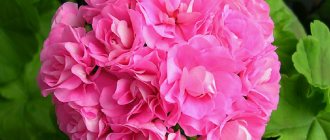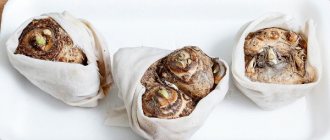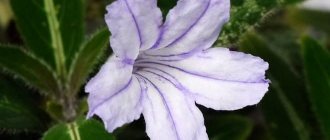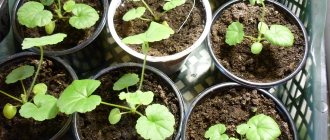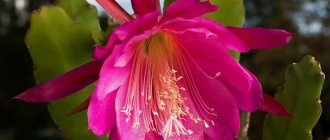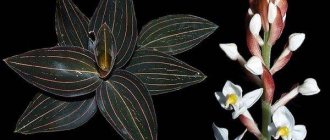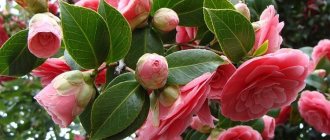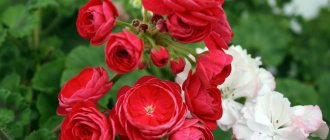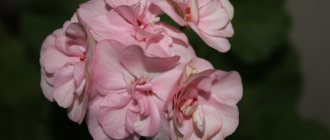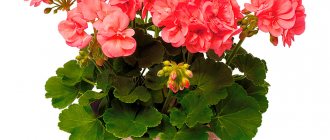Growing problems, diseases and pests
The presence of diseases is determined by the general condition of the crop and its appearance. Some specimens may exhibit yellowing of the leaf blades, dryness or lethargy, which can indicate serious problems:
- gray spots on the green part indicate the development of gray rot, the source of the damage is excessive waterlogging of the substrate;
- insufficient lighting is manifested by elongation of shoots and lack of peduncles;
- a reddish tint to the leaf blades appears at low temperatures.
Parasitic insect attacks have their own symptoms:
- Spider mites - attack crops when indoor air is too dry. It manifests itself as drying of the foliage and silvery cobwebs on the green part.
- Mealybug - identified by a whitish coating on the plates. The attack occurs when the soil is constantly waterlogged.
- Whitefly - looks like miniature butterflies. The parasite quickly forms colonies and covers the entire plant.
Important! The occurrence of symptoms of a lesion requires therapeutic measures to save the diseased flower
How to deal with them
Fungicidal solutions are used to treat fungal pathologies. The plant is transplanted into a new container with fresh substrate; before the procedure, all affected areas are removed and sprinkled with activated carbon powder.
The fight against parasitic insects involves mechanically treating the green part with a cotton pad and soap solution and spraying it with insecticides. The event is carried out several times until the pests are completely destroyed.
Caring for pelargonium is not difficult; if you follow the rules, it will delight you with bright buds that do not fade within six months.
Conditions for growing at home
Pelargoniums in general and zonal ones in particular are unpretentious. To provide them with care at home, you do not need to withstand specific conditions.
But still, the plant puts forward certain requirements for annual flowering, and it is better to comply with them so that pelargonium regularly produces buds and delights with its appearance.
Place for a flower
For the development and growth of pelargonium, window sills oriented to the east or west with bright but diffused light are suitable.
Direct sunlight can cause burns on delicate leaves, so you should not place the flower pot on a south-facing window. But a lack of light will also have a negative impact on the plant - the lack of sun will result in a lack of flowering.
Temperature
The optimal temperature for a flower in summer is about +25 °C, and in winter - about +15 °C or slightly lower.
Attention! The seasonal difference is due to the need to provide the plant with a period of rest.
Air humidity
Pelargonium does not really need regular spraying, but in moments of particularly drying summer heat, you can slightly humidify the air around the flower, trying not to get it on the leaves, or place a tray with water nearby.
In general, ordinary room humidity is quite suitable for pelargonium.
Watering
Pelargoniums do not tolerate too wet, heavy soils. Stagnation of moisture causes the development of fungal diseases and sooner or later will lead to the death of the plant.
When watering, you should be guided by the rule: “It’s better to dry it a little than to overwater it a little.”
Attention! For irrigation, you should take settled water at room temperature.
Soil for zonal pelargonium
A substrate that is too nutritious will do a disservice: an excess of microelements will lead to an abundant growth of green mass to the detriment of flowering.
Usually for pelargonium they choose universal substrates for flowering plants or mix it themselves. In equal parts you will need:
- humus;
- turf land;
- peat.
To prevent root rotting, you can mix brick chips or charcoal into the substrate - they perfectly absorb excess moisture.
Advice! Add a little calcined river sand - this will increase the looseness of the soil and its breathability.
Feeding and fertilizer
Pelargonium, like any flowering plant, needs mineral support throughout its active cycle (from early spring to late autumn).
But at the same time, at the beginning of spring, nitrogen-containing mineral fertilizers are applied to stimulate the development of greenery. And after a month, nitrogen is canceled and potassium-phosphorus fertilizers are applied during irrigation with a frequency of once every 14–17 days.
This mineral support helps pelargonium produce the maximum number of inflorescences.
With the end of flowering, feeding is stopped. Excess nutrients will prevent the plant from going into hibernation, which can lead to a delay or complete absence of flowering next year.
Transplanting pelargonium
Young plants that have not reached three years of age are replanted annually in the spring. This is due to the active development of the root system.
Older plants are replanted every 2-3 years as the pot becomes small. The manipulation is planned for the spring, after the plant emerges from the winter dormancy period.
Trimming
Like any plant with abundant green mass, pelargonium needs regular sanitary and formative pruning.
Sanitary pruning is carried out throughout the entire period of active growing season, removing all broken or dried leaf blades and faded corollas.
Formative pruning is carried out after flowering:
- All elongated shoots are shortened by 1/3 of the total length.
- Cut off the central trunk.
- Give the bush the desired shape.
But you shouldn’t radically “shave” the plant: too much pruning is stressful for pelargonium, which can lead to delayed flowering.
How does a plant reproduce?
Most gardeners who want to get new specimens of Lake pelargonium choose cuttings. Dividing the bush is not practiced because the plant has only one central stem. Lateral branches appear only at a level of 8-10 cm from its base.
You can buy Lake pelargonium seeds in the store, but growing seedlings is a long and labor-intensive process. New plants will bloom for the first time no earlier than 4-5 years after emergence. But among experienced flower growers, the opinion has taken root that pelargoniums grown from seeds bloom much more luxuriantly and brightly than those obtained from cuttings.
Planting material is obtained during the spring pruning of Lake pelargonium. Cuttings cut in the fall take longer to root and have a lower success rate due to the fact that the plant's metabolism slows down by winter. The approximate length of the cutting is 8-10 cm, it should have at least 3 growth buds.
Cuttings
The procedure for rooting cuttings follows the following algorithm:
- Cut the cuttings at right angles with a sharp, disinfected knife or scissors.
- “Dry” the planting material, allowing the cuttings to sit for 2-3 hours. During this time, a thin “film” forms on the cut.
- Sprinkle the cut with a powdered root formation stimulator or dip it in its solution for 3-4 hours.
- Place the cuttings in a container with clean water (this is subsequently changed daily for fresh water). Also, for rooting, you can use a weak solution of the same biostimulant or add a little honey, succinic acid, or aloe juice to it.
If cuttings are planted in a substrate, it should be loose and moisture-absorbing (sand, perlite, vermiculite, chopped coconut fiber or sphagnum moss).
- Create a "greenhouse effect". To do this, put a plastic bag on the container and seal it tightly, or cover it with a cut-off plastic bottle. If you have a home mini-greenhouse, Lake pelargonium cuttings are placed in it.
- Provide the cuttings with 10-12 hours of daylight and a constantly moderately moist substrate. As condensation accumulates, the “greenhouse” needs to be opened slightly to get rid of it. Roots appear in 2-2.5 weeks. This is “signaled” by new leaves at the top of the cutting.
- Allow the roots to grow to 3-4 cm (this takes about a month). Transplant new specimens of Lake pelargonium into a substrate suitable for adult plants. Provide them with standard care.
Lake pelargonium cuttings root successfully in 90-95% of cases
The first pinching of Lake pelargonium obtained from cuttings is done after the 8-10th leaf. For specimens grown from seeds, it is carried out earlier - after the 6-8th leaf.
Aftercare
In order for Lake pelargonium to delight with elegant flowering, it is important to surround the flower with competent regular care
Temperature
Pelargoniums (pelargonium) came from the hot climate of the South American continent. This is why they need the right temperature.
In summer it should be +23..+28 degrees, during the rest period (autumn, winter, early spring) - +12..+15 degrees.
Attention! In winter, you cannot place the pot on the windowsill above the radiator - dry air is harmful to the plant
Watering and spraying, humidity level
The plant is moisture-loving; the soil is irrigated when the earthen clod dries out. Spraying is not required, but some gardeners use a spray bottle as a way to kill dust.
To maintain a comfortable level of humidity, you can place a container of water next to the flower.
Loosening
After each watering, you should carefully loosen the soil to ensure oxygen access to the roots. This is done carefully, since pelargoniums have a superficial root system.
Fertilizing
The soil for Laque pelargonium should be fertilized from March to September. In this case, ready-made mineral complexes for flowering plants are used.
During the flowering period, they are fed with potassium fertilizers, without using nitrogen-containing ones - they cause rapid growth of foliage to the detriment of budding.
The plant needs high-quality care, only in this case it will not lose its decorative effect.
Trimming
Be sure to pinch the top, otherwise the bush will stretch upward, becoming like a “stick”. It does not form side shoots on its own.
Pruning is carried out until a flower bud forms.
Further care
Pelargonium Ingrid - characteristics and cultivation
Caring for pelargonium is not difficult even for an inexperienced gardener. It consists of timely moderate watering and loosening of the soil. Drying out of the soil or stagnation of excess water should not be allowed. Excessive watering can lead to root rot. The variety does not require spraying of leaves or additional air humidification.
Pelargonium grows independently with one stem. To give the bush a beautiful shape, pruning should be done. Then several new shoots will grow from each stem at once, and the plant will take on a beautiful shape.
Formed flower on the windowsill
With the onset of cool days in autumn, pots with plants are moved to a cooler place. The lack of lighting is compensated for by fluorescent lamps, extending the daylight hours to 10-12 hours. The air temperature should not exceed 20 °C.
Important! Fertilizing is done once a month with complex fertilizers for flowering plants.
Common diseases and pests
Despite the fact that the plant is unpretentious and has good immunity, sometimes it succumbs to diseases and various pests. The main reason is violation of the rules of care. To make the plant look healthy and beautiful, you need to monitor the watering system, loosen the soil and pick off dry leaves that take away vitality.
The most famous diseases are the following:
- Fungal diseases. If dark spots begin to appear on the leaves, this indicates the presence of fungus. To combat the disease, you need to quickly remove all parts that are affected and treat the plant with fungicides. If the disease does not stop the plant, then it must be replanted by removing all damaged roots and treating the pot.
- Rust. Yellow-red spots appear on the leaves, then they dry out and begin to fall off. Usually the problem occurs due to high temperatures and exposure to direct sunlight. We remove all affected parts, treat the plant and move it to a suitable location.
- Late blight. The plant begins to rot and wither, rapidly falling off. The reason is excessive watering. If the flower has already been flooded, then it needs to be replanted. During transplantation, we remove all damaged and rotting parts of the plant. We treat the pot with manganese solution.
Ivy-Leaved Pelargoniums
Plants with long, thin stems and tough, ivy-like leaves covered with a thick cuticle that helps reduce moisture loss during drought.
The varieties of this group originated from the ivy-leaved pelargonium (Pelargonium peltatum); they differ in the size of the leaves, the color and shape of the flowers, the degree of terry, there are varieties with variegated leaves. They are divided into:
- true ivy-leaved pelargoniums (Ivy-Leaved Pelargoniums) - this includes varieties and hybrids in which there are practically or completely no signs of zonal pelargoniums.
- hybrid ivy-leaved pelargoniums (Hybrid Ivy-Leaved Pelargoniums) - this includes varieties in which the characteristics of both zonal and ivy-leaved pelargoniums are clearly visible.
Growing problems and pests
The main pests of pelargonium are the root bug, which spoils the roots of the plant, and the whitefly, which likes to settle on the inside of the leaves. The appearance of root worms is promoted by excessive soil moisture. Insecticides are used to combat it. But in the case of damage to the root system, it is better to say goodbye to the flower and replant the cut off tops of the plant in new soil.
If you create suitable conditions for a perennial flower, it will delight you with its unique color for a long time. The main thing is not to overdo it with watering.
vote
Article Rating
Winter care
Optimal wintering conditions can be created on a glazed, frost-free, well-lit loggia or in a greenhouse. It is necessary to maintain a minimum temperature at night not lower than +6°C, in the daytime - about +12+15°C. In case of overheating on sunny days, open the greenhouse doors for ventilation. Angels, bicolor and tricolor varieties are best kept at higher temperatures, placing them in warmer places in the greenhouse or loggia.
Good air circulation around the plants is required; they should not be placed too closely; if necessary, the dense roots should be thinned out a little. This will help avoid the occurrence of fungal diseases. Watering during this time is quite sparse; experienced gardeners carry it out from pallets, clearly measuring the amount of water and determining the time of the next watering by the weight of the pots, while the top of the soil is always left dry.
There are other ways of wintering. One of them is to preserve plants in the form of rooted cuttings, while the mother plant is thrown away. The method is used for summer cultivation of pelargoniums in the open air.
The second method is also used for outdoor growing: on the eve of frost, the plant is dug up, excess soil is shaken off the roots, the plant is heavily pruned and wrapped in paper, then hung in a cool basement. The room should have good ventilation and high humidity so that the plant does not dry out. In the spring it is planted in a pot, and with the onset of warmth it is planted in open ground. You can combine the first and second methods: first take cuttings, and then send the mother plant to the basement for the winter.
Wintering occurs during the darkest time of the year and lasts approximately 2.5-3 months (from November to February). Already at the end of January - beginning of February, with increasing daylight hours, pelargoniums gradually begin to wake up.
Reproduction
Pelargonium SOUTH Shukar, Aksinya, Ireland and other varieties
When describing Lake pelargonium, it should be noted that reproduction is possible in various ways. Seed is rarely selected due to labor intensity, duration and lack of guarantee of preservation of varietal characteristics.
The most popular are cuttings and rooting a leaf; they will help preserve all the specifics and are quite simple to implement.
Dividing a bush - a method practiced by experienced gardeners, involves dividing the mother's overgrown plant into separate branches and transplanting each of them into a separate container.
Pelargonium zonal description
Pelargonium zonalis is distinguished by large, brightly colored flowers, collected in large dense or loose umbrella-shaped inflorescences. The flowers are simple, semi-double, double and densely double. The color of the petals is very diverse - white, pink, bright red of various shades, lilac, purple. Often two-colored, with a bright eye in the center or a border around the edge. The leaves are round, softly pubescent, on long stalks. The color is green with a concentric-zonal pattern. There are varieties with brown leaves and variegated (tri-zonal). Plant height varies from 15 to 75 cm.
Origin. South and South West Africa.
Story. Zonal pelorgonium first appeared in Europe at the beginning of the 18th century.
Varieties. Varieties of zonal pelargonium were obtained by crossing Pelargonium zonale L'Herit. ex Ait with other species - Pelargonium cucullatum Ait. (Pelargonium cap), Pelargonium inquensis Ait. (Pelargonium settlers), as well as with some other species and forms. Mutant varieties are available.
Varieties differ in plant height, shape and color of leaves and flowers.
In total, more than a thousand varieties are known.
Varieties: grown from seeds:
- Caprice - with coral-pink flowers.
- Sprinter - with bright red flowers.
- Ringo - with red flowers.
- Playboy - mixed colors, leaves with a bronze tint, small flowers.
Varieties from Cerny company. :
Jitka F1 - Simple salmon flowers. The leaf is green with a brown tint along the edge.
Blanca F1 - Flowers are simple white. The leaf is green with a brown tint along the edge.
Pelargonium 'Yarka F1'
Pelargonium 'Paul' F1
From cuttings grown:
- Paul Krempel - with simple red flowers.
- Irene - with semi-double light cherry flowers.
- Gustav Emich - with red double flowers.
- Youth - with pinkish-oriage double flowers.
- Jewelry chest - with orange-red double flowers.
Temperature. Seeds germinate at temperatures of 21 °C and above. The shards must be heated from below (up to 18 °C). Harden off the plants gradually. Geraniums do not tolerate frost.
Illumination. Seedlings indoors need good lighting. Cuttings need to be shaded during the rooting period. Mature plants require good lighting on a sunny windowsill, but indirect light is also suitable.
Watering. You can use unsettled tap water. The soil in the container should dry out between waterings.
Air humidity. Keep pelargonium zonalis dry and do not spray it from above.
Feeding. Feed the plant in the soil mixture once a week; in a soilless substrate - every 3 days. Use liquid fertilizers, diluting them 2 times weaker than the manufacturer recommends. If the plant grows well outdoors, use fertilizers in the concentration recommended by the manufacturer.
The soil. Use a soilless substrate to sow seeds and root cuttings. Plant an adult plant in fertile clay soil or a mixture for indoor plants.
Transfer. .
Appearance care. Remove faded flower umbels by cutting off the flower stalks at the base.
Reproduction. Take cuttings from plants planted on the balcony in mid-summer or early autumn. Indoors, cut them back in early fall or early spring. Root 3-4 cuttings in a 10 cm pot. Heat cuttings of indoor plants from below (18 ° C). Sow seeds in early spring in moist soil and germinate them at temperatures of 18 °C and above.
Peculiarities. Cuttings. Select a shoot with at least two leaf piles and a growing point and cut the stem under the lower leaf pile (about 10 cm long). Cut the cutting diagonally again so that the cut surface is smooth. Remove the bottom two leaves. Dip a cutting cutting into rooting hormone powder and place it near the edge of a pot filled with seedling potting mix.
Usage. One of the most common indoor plants. An excellent material for landscaping balconies. It is used in landscape design when planting lawns as a one-year plant. When gardening in containers, in order for the plant to overwinter, it must be brought indoors and kept until next spring in a cool, dry, well-lit place.
Description of the pelargonium variety Lake and its characteristics
Pelargonium Lake is small in size, very similar to geranium. In fact, it belongs to the genus Pelargonium, which is part of the Geraniaceae family. Pelargonium Like has beautiful carved round leaves of dark green color with a wide green-brown edge.
What is Pelargonium Like
Double bright pink, milky white, orange, scarlet, peach flowers acquire a lighter shade at the edges. Small inflorescences gather into a large, dense, amazingly beautiful ball.
For your information! Pelargonium has long roots, this must be taken into account when choosing a pot for planting. It grows very quickly, forming one central stem that requires pruning.
Planting and propagation
Pelargonium is propagated vegetatively and by growing from seeds. Each method has its own characteristics associated with the methodology of work.
Propagation by cuttings
It is considered a simple and highly effective way to obtain a new plant. To do this, during the next pruning of the bush, cuttings from 10 to 13 cm long are prepared.
Excess leaves are cut off from the bottom and the cuttings are placed in water for germination or treated with preparations that stimulate root formation and buried 2–3 cm in the soil.
Roots usually form within three weeks.
Growing from seeds
This is a longer process:
- The seeds are laid out on the surface of the nutrient substrate without being buried.
- Moisten with a spray bottle and cover the container with glass or film, thus creating a greenhouse.
- Place the container in a warm, well-lit place and open it for a short time every day for ventilation.
- Water as the top layer of soil dries.
After the shoots emerge, the film can be removed.
https://youtube.com/watch?v=OZvGAx8hyfs%2520
Picking
After the pelargonium seedlings produce 2-3 true leaves, it’s time to plant, that is, plant them from a common container into separate pots.
Important! There is no need to rush into picking and planting seedlings as soon as they appear. The sprouts need to be given time to get stronger and form a normal root system. When picking, do not moisten the soil too much - this can worsen gas exchange, and the seedlings will not take root.
When picking, no additional fertilizers are applied: everything that is needed for the development of small pelargoniums is already contained in the substrate
When picking, you should not moisten the soil too much - this can worsen gas exchange, and the seedlings will not take root. When picking, no additional fertilizers are applied: everything that is needed for the development of small pelargoniums is already contained in the substrate.
Hardening
Since pelargonium is also cultivated as a garden annual, the seedlings are first hardened off before planting in a permanent place in the flowerbed. This procedure helps tender seedlings adapt to new conditions.
For hardening, the seedlings are taken out for 30–40 minutes, first on a loggia or enclosed terrace, and then outside. The time is gradually increased. Hardening lasts about a week, sometimes two weeks.
Important! When hardening, the air temperature should not be lower than +10 °C.
When to pinch out seedlings
In order for the pelargonium bush to produce abundant lateral shoots, to be lush and voluminous, in the phase of formation of the 6th leaf, the stem is pinched. This procedure helps to achieve more luxuriant flowering.
Sowing time
Pelargonium seeds are planted from the beginning of February to the end of March, at the latest in the first half of April. After this, landing makes virtually no sense.
Preparing seeds for sowing
To improve the germination of seeds, scarification is carried out - parts of the dense seed coat are removed due to mechanical action or soaking.
To do this, it is recommended to rub the seeds a little between two sheets of fine sandpaper and soak for 1.5–2 hours in water at room temperature.
The second option is to pour boiling water over the seeds and then cold water, pour hot water over the seed material and leave it like that for a day.
Planting Pelargonium Lake
Lake - pelargonium is unpretentious, but it is important to choose optimal conditions for the plant.
Choosing a place and pot
Pelargonium Sutarve Clara San - variety characteristics and cultivation
Like all house geraniums, Laque prefers light areas on the south side. However, it is very important to protect the “green pet” from direct UV rays by lightly shading with tulle. A draft is unacceptable, but the crop loves fresh air, so constant ventilation must be ensured.
The pot should be selected based on the size of the bush, taking into account the fact that this geranium does not like “relocation”. Rounded models up to 15 cm in diameter and up to 20-30 cm in height look beautiful. But these dimensions are relevant for an adult plant. To plant the cuttings, you can choose a regular plastic cup.
Note! The diameter of the container should not be too large, otherwise pelargonium will begin to develop a root system, which will affect the green mass and flowering.
A very beautiful plant will certainly respond to proper care and will thank the grower with stunning caps of inflorescences
Priming
A drainage layer is required, for example, from gravel, expanded clay, vermiculite. It will help prevent the roots from rotting. You can buy ready-made soil for geraniums. Or mix it yourself from turf, humus and coarse river sand.
